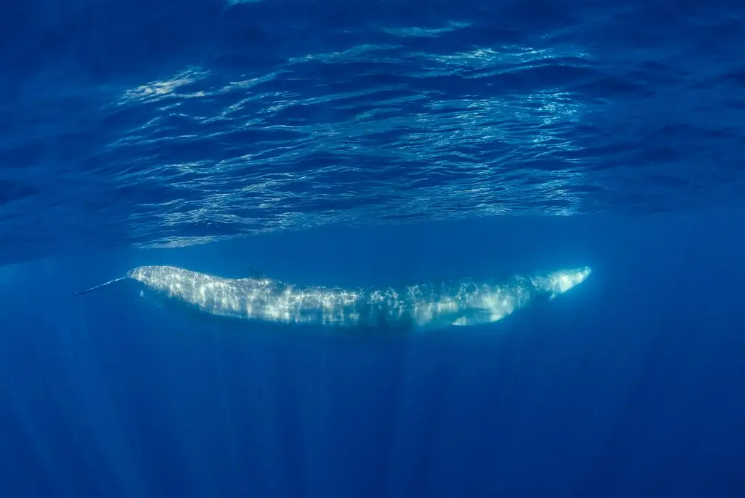我们通过发表论文来表彰学生 STEM 写作比赛的前 11 名获奖者。这是尼古拉·迈尔斯(Nicola Myers)的作品。

And the Grammy Goes to … Fin Whales?
The hottest music of this year might just belong to fin whales. Well, at least in the opinion of seismologists. Named for the smooth fin that juts from their backs, fin whales span an impressive 80 feet in length and have long been composing melodies deep below the ocean’s surface. These noises are so loud that the marine geophysicist William Wilcock likened them to those of a “big container ship.” While conducting seismic research, scientists viewed the whales’ songs as a vociferous inconvenience, failing to recognize the potential behind the hubbub. The seismologist Václav Kuna, however, was intrigued by the constant chatter of the fin whales. He decided to investigate these odd sounds further and stumbled upon a discovery larger than fin whales themselves.
Seismologists such as Dr. Kuna study seismic waves (energy waves created when rock fractures in Earth’s crust) to better understand earthquakes. Air guns have been the go-to tool for the documentation of seismic activity in oceanic crust. Yet they have one major downfall: Air guns contribute to the human-induced noise-levels of oceans, creating a stressful environment for marine life.
Dr. Kuna, along with John Nabelek, a professor at Oregon State University, found and recently published an alternative method to air guns, one that relies on help from fin whales. How can these majestic mammals assist seismologists? The process is simple: Energy from the hums of fin whales zips through the water and echoes off the ocean floor, transforming into seismic waves. Seismometers then capture the noises, similarly to how the vibrating sound waves of air guns would be recorded. “Fin whale seismology” has helped to uncover rock layers in the ocean, seemingly giving scientists the superhuman power of X-ray vision to see through 8,200 feet of the obscure seafloor. Though fin whale seismology is not as accurate as the air gun approach, Dr. Kuna still calls the discovery a “win-win” and believes that the method can “complement” traditional ways of obtaining seismic data. And best of all, the harmonies of fin whales are sounds already native to aquatic life.
Jackie Caplan-Auerbach, who studies volcanoes and seismology at Western Washington University, explains that she first saw the constant blabber of fin whales as nothing more than a nuisance to her research. She now calls the findings of Dr. Kuna and Dr. Nabelek “awesome,” asserting that their study demonstrates how scientists can derive data from natural sources instead of conducting experiments with man-made technology. The full potential of fin whale seismology will come with future studies, but for now, here’s what’s certain: Fin whales deserve the award for best new artist at the “Underwater Grammys” for wowing seismologists and marine life alike with the power of their melodic voices.
Works Cited
Andrews, Robin George. “Whale Songs Could Reveal Deep Secrets Beneath the Oceans.” The New York Times, 11 Feb. 2021.
Chapuis, Lucille, Shaun P. Collin, Carlos M. Duarte, et al. “The Soundscape of the Anthropocene Ocean.” Science, 5 Feb. 2021.
Endsley, Kevin. “What Is Seismology and What Are Seismic Waves?” UPSeis, 2007.
Gramling, Carolyn. “Fin Whale Songs Can Reveal Hidden Features of the Ocean Floor.” Science News. 12 Feb. 2021.
Kuna, Václav M. and John L. Nabelek. “Seismic Crustal Imaging Using Fin Whale Songs.” Science, 12 Feb. 2021.